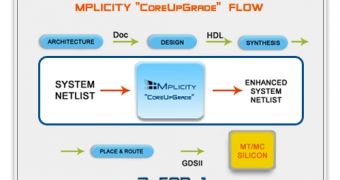The entire idea that stands behind a multicore processor is that it "might" help you do more things at the same time, the term also known as multitasking. And for that reason and that reason alone, the industry has shifted its attention towards milking as much as they can out of the fat cow of progress. In the pursuit of this purpose, we have games that are "enhanced for multicore processors", ads seen everywhere say that if you want your computer to behave better and faster, you should upgrade your processor to the new "bla bla bla" which brings you the heaven, the earth and everything in between.
Of course that the multicore processors give processing advantage over single core processors, but don't expect to see anything that spectacular as the commercials want you to believe. It is the same thing as with the PCI Express interface: as opposed to the AGP interface, the first of the two had a larger perspective in the future, many possible uses, but, at its release, it was marketed as being a "necessary upgrade" and speed was the given motive, claiming it would transfer more information and reduce those nasty memory bottlenecks which caused the system to hang (mostly) during video applications.
Somebody has to come along from time to time and break the ice, and it's the turn of Israel-based Startup Mplicity Ltd. Company to take the spotlight with what they claim to be a revolutionary technology which allows a single threaded system to perform similarly to a multithreaded system with a performance improvement factor of up to four. They have developed a software called CoreUpGrade which is independent of processor architecture and has the ability of creating up to four virtual processors which all in term process the information such as independent processors would.
The creation of a software model of the original processor meant that at the binary code level, any software programs would be executed as though it was the original processor doing the job. What it does exactly is to take processing of several sequential tasks and run them in parallel, eliminating the idle cycles and reducing wasted instruction fetch cycles. All-in-one, their alternative seems to be just the thing an upgrade should imply, especially because it can reduce power consumption by linking together similar tasks by up to 50%.

 14 DAY TRIAL //
14 DAY TRIAL //